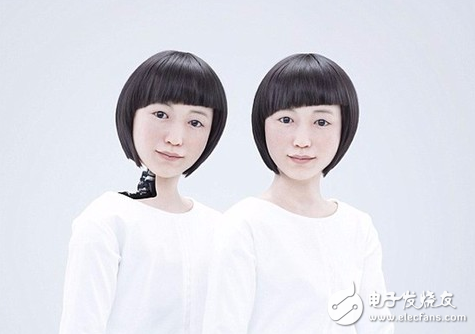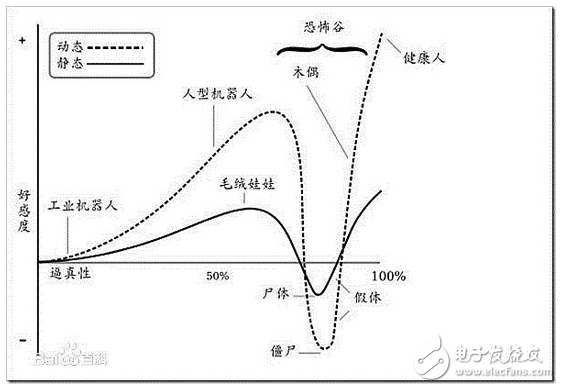In 2010, China became the world's largest manufacturing power. In 2013, China became the largest market for industrial robots in the world. In 2015, the Chinese market sold a total of 66,000 industrial robots, ranking first in the global market for three consecutive years.
The International Federation of Robotics (IFR) predicts that China's industrial robot sales will reach 150,000 units in 2018, accounting for more than one-third of global sales, and nearly four times the size of Japan's second largest market (40,000 units). The China Robotics Industry Alliance predicts that the total size of China's industrial robot market will reach 600 billion yuan in the next decade.
Robots are not only the basic equipment of high-end manufacturing, but also the living service facilities of human society. With the development of artificial intelligence and other technologies, robots are spreading from industrial applications to life service applications. At the time of industrial transformation, it is the window of opportunity for latecomers. .
With the combination of artificial intelligence technology and the new generation of information technology and robots represented by Internet of Things, big data, and cloud computing, the robot industry is entering a period of technological explosion. The future of robots will become more and more intelligent, and the scope of application will be extended to service areas outside the industry, which will bring more imagination to the robot industry. And those companies with unique technology will undoubtedly stand at the top of the wave.

Opportunities are also challenges. As robots develop rapidly, we have to worry about the scenes of robots occupying the Earth in movies. Here, the phenomenon that robots are too realistic and people are afraid of resentment has long been studied. As a "horror valley" phenomenon. Let's take a look at the law of Horror Valley!
What is the law of terror valley
The Horror Valley Theory is a hypothesis about human perception of robots and non-human objects. It was hypothesized by Japanese robot expert Mori Masahiro in 1969 when robots were more than 95% similar to humans. Since robots and humans are quite similar in appearance and movement, humans also have positive emotions on robots. Until a certain degree, their reaction suddenly becomes extremely repugnant. Even if the robot and the human being have a little difference, it will be very conspicuous, making the whole robot look very stiff and horrible, and it has the feeling of facing the walking dead. The higher the degree of simulation of a humanoid toy or robot, the more people feel good, but when it exceeds a critical point, the degree of goodwill suddenly decreases. The more people feel the more fearful, until the bottom of the valley, called the Valley of Horror.
However, when the robot's appearance and movement and human similarity continue to rise, humans' emotional response to them will also return to positive, close to the empathy between humans and humans. Perhaps because of this, many robotics experts try to avoid the "robot" appearance being too personal in the manufacture of robots in order to avoid falling into the "horror valley trap."

"Terror Valley" can use the above diagram to illustrate its theoretical details. The horizontal axis is the degree of anthropomorphism. The more it is to the right, the more it looks like human beings; the vertical axis is the degree of goodness of people, and the higher the degree of goodness. Incidentally, this picture is also called "Sen Chang Hong Chart". From the above figure, we can see that as the anthropomorphic degree of the robot increases, our sensibility is gradually rising, as if we would think that “Big White†and “Little Yellow Man†are very cute (“The Valley of Horrorâ€). The application is not only in the robotics field, they are very similar to humans (the same feelings), but not like humans (more like another creature). But when the similarity between robots and humans reaches a high level, our goodwill will drop sharply and even feel fear and fear. The trough in the picture is the so-called "horror valley."
The cause of the law of the terror valley
The causes of the "Terror Valley" are different in the field of psychology. There are several current analyses, namely "death theory", "disease theory", "empathy mechanism theory" and "compassion theory".
According to Mori Masahiro's theory, as the degree of anthropomorphism of humanoid objects increases, the humanity's affection for it also changes. The Valley of Horror is the range in which human sensibility suddenly drops as the robot reaches the level of “close to humanityâ€. The human body that will be active is more variable than the static human body. The phenomenon of the terror valley can be explained by the following idea. If an entity is sufficiently "not enough to be anthropomorphic", its humanoid characteristics will be conspicuous and easily identifiable, resulting in empathy. On the other hand, if an entity is “very anthropomorphic,†its non-humanoid features become a conspicuous part, creating an odd feeling in the eyes of human observers.
There are several reasons for this. One is the uneasiness caused by the uncertainty of true and false in high simulation. The degree of simulation is very low, people are not afraid, because knowing that it is fake, the degree of simulation is high to a certain extent, people sometimes do not know the true and false, the real person as a dummy, the fake person as a real person, will scare people. In addition, it stems from a sense of threat. Being so similar to humans but not human is a potential threat.
Another possibility is that the patient and the corpse have many visual aberrations similar to some humanoid robots, leading to the same panic and emotional upheaval by the observer. This kind of reaction is worse in the robot's case than the corpse, because people can easily understand the reason for their feelings of disgusting to the body, but they can't clearly understand why they have this dislike to the robot. Behavioral malformations include behavioral characteristics of the disease, neurological states, or even mental dysfunctions, again evoking the negative negative emotions of the observer.
This phenomenon can also be explained in the language of evolutionary psychology. First, the entity in the Valley of Terror is enough to be a human being and can be considered a member of a human species. According to the theory of evolutionary psychology, after millions of years of natural selection, there is a logical bias in the existing human brain that has not been eliminated by nature, providing a high degree of ability to sense and reject those that reflect hereditary diseases or Lack of healthy overall appearance on microscopic or macroscopic human abnormalities. Therefore, unintentionally (and deliberately, if the observer explicitly thinks about this), the potential impact of those abnormal humanoid entities in the human gene pool will also sound the observer's warning. This explains why it is always difficult for humans to feel that humanoids that engage in sexual contact are very attractive.
Moreover, in life you may have been exposed to a lot of "horror valley" phenomena, such as movies and cartoons. The typical representative is "Tomb of the Dead" and Hu Di in "Toy Story" is also considered an example of the Valley of Horror, and some of the three-dimensional children's faces made in the game will also be creepy.
Of course, for Sen Changhong's theory, scientists have different opinions. Some people even think that the concept of "horror valley" is not science, but pseudoscience.

Table Gas Cooker,Gas Stoves,Gas Cookers,Tabletop Stoves
xunda science&technology group co.ltd , https://www.gasstove.be